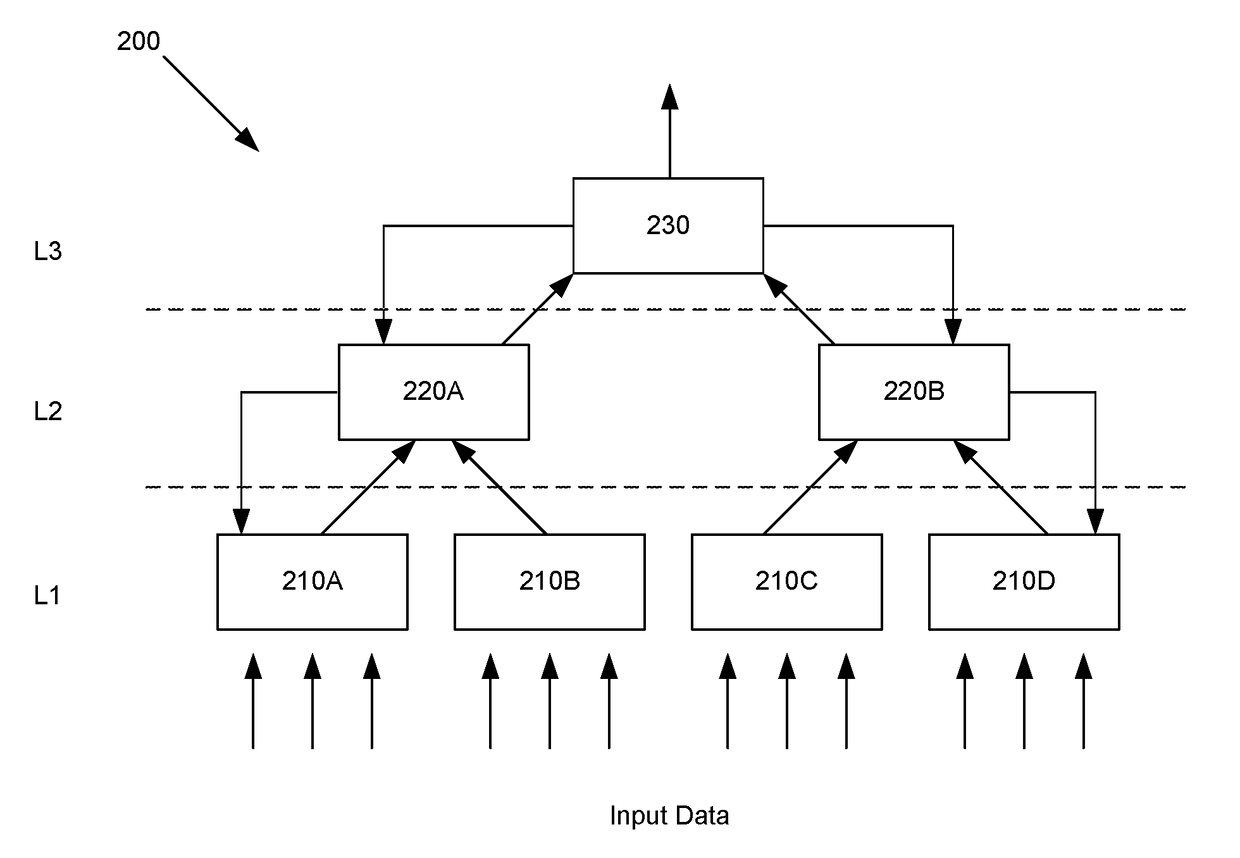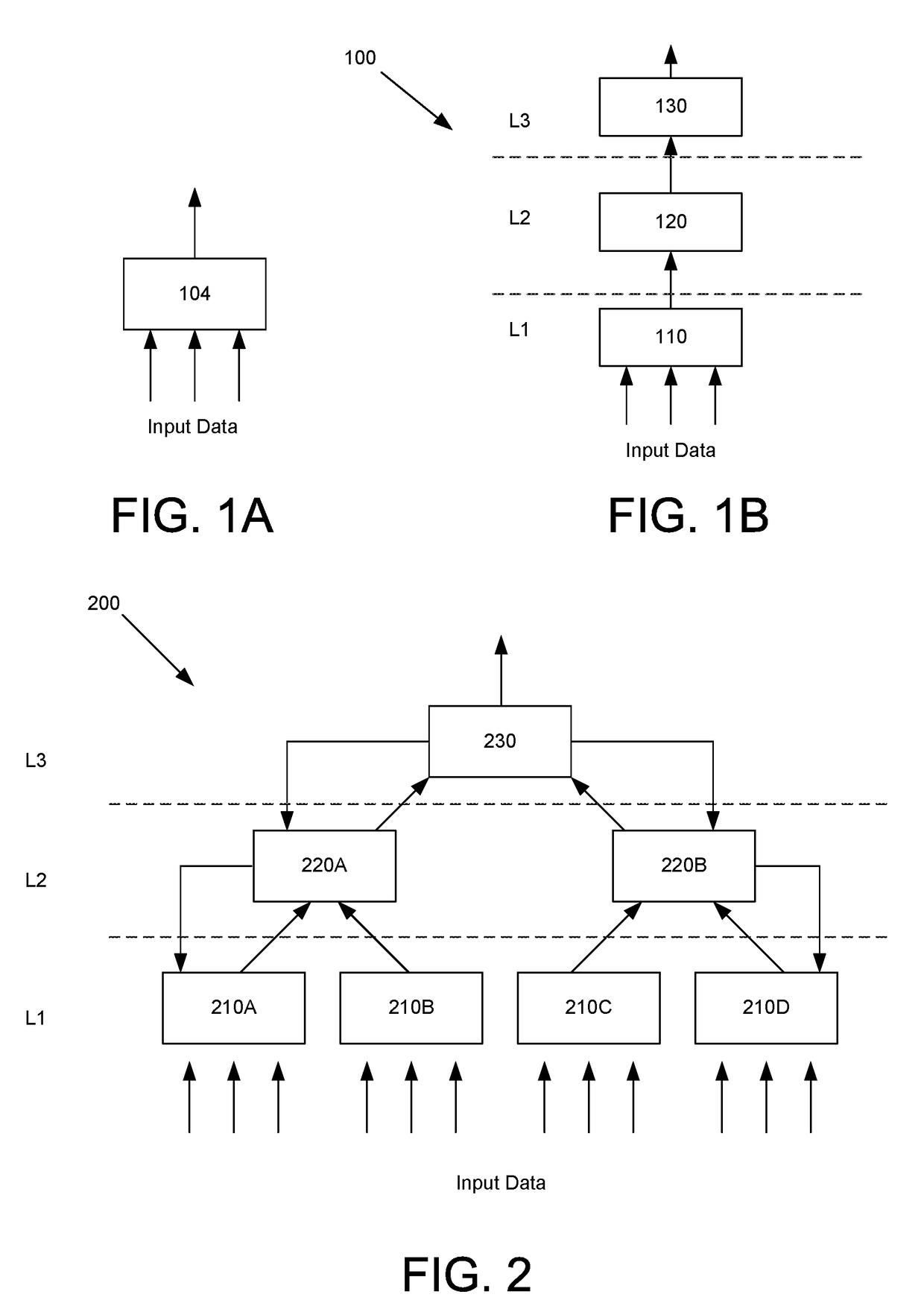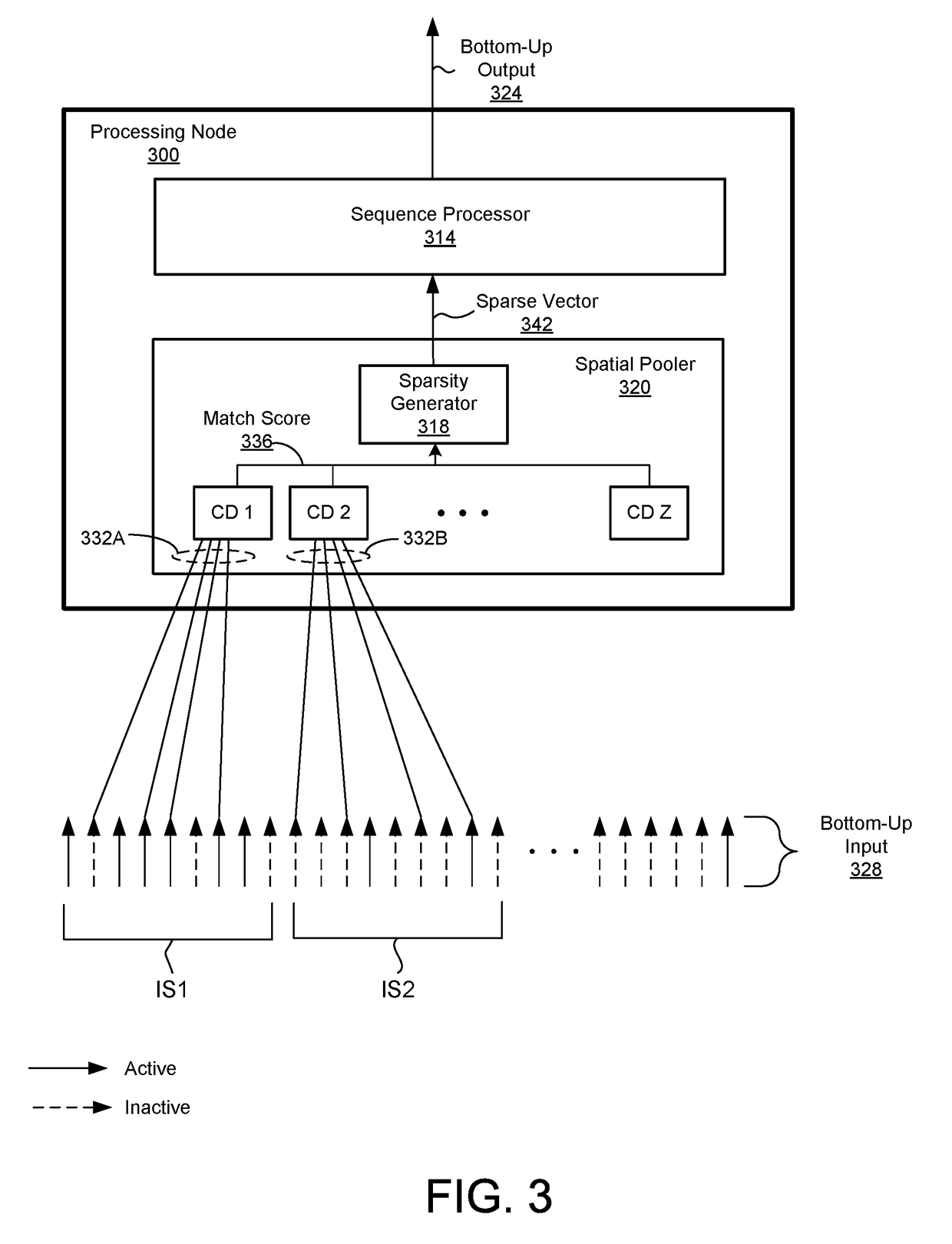Feedback mechanisms in sequence learning systems with temporal processing capability
- Summary
- Abstract
- Description
- Claims
- Application Information
AI Technical Summary
Benefits of technology
Problems solved by technology
Method used
Image
Examples
example method
of Performing Temporal Processing
[0101]FIG. 11 is a flowchart illustrating a method of performing temporal processing in processing node 300, according to one embodiment. The cells in the sequence processor 314 receive 1114 sequence inputs from lateral connections and feedback inputs from feedback connections indicating activation states of connected cells. For each cell, the activation states of the received sequence inputs and feedback inputs are compared 1118 with the connected cells stored in its temporal memory segments and feedback memory segments.
[0102]Cells that generate lateral hit signal 930 and feedback hit signal 934 based on the received sequence inputs and feedback inputs are predictively activated 1122. The sequence processor 314 receives 1126 column activation signals and cells in the sequence processor are activated according to activation and inhibition rules.
[0103]Cells that are activated and selected for learning establish 1130 new lateral connections to other ce...
PUM
 Login to View More
Login to View More Abstract
Description
Claims
Application Information
 Login to View More
Login to View More - R&D
- Intellectual Property
- Life Sciences
- Materials
- Tech Scout
- Unparalleled Data Quality
- Higher Quality Content
- 60% Fewer Hallucinations
Browse by: Latest US Patents, China's latest patents, Technical Efficacy Thesaurus, Application Domain, Technology Topic, Popular Technical Reports.
© 2025 PatSnap. All rights reserved.Legal|Privacy policy|Modern Slavery Act Transparency Statement|Sitemap|About US| Contact US: help@patsnap.com



